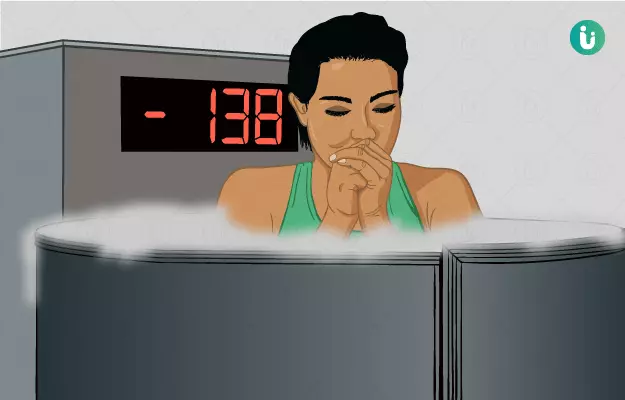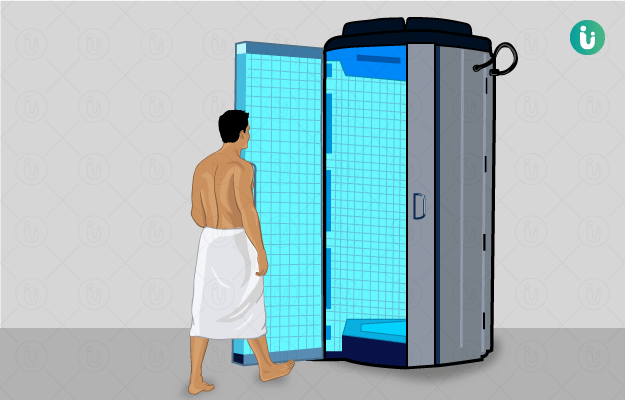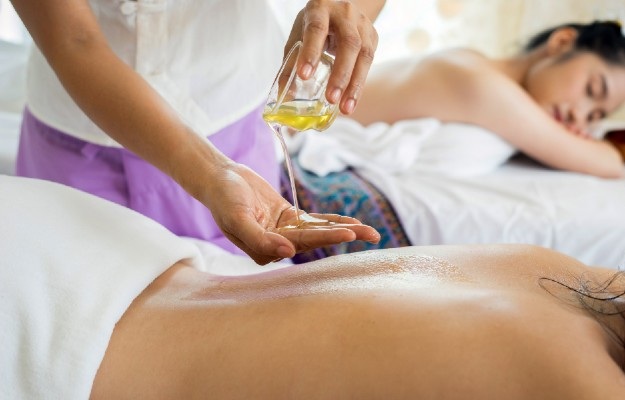Following are the procedures for the different types of cryotherapy:
Cryosurgery: Cryotherapy is often used interchangeably with cryosurgery, which is the application of cold energy to destroy target cells in a controlled manner. A cryogen, or source of cold energy into which the heat from target cells is transferred, is used. Liquid nitrogen is the most commonly used and preferred cryogen. Other cryogens available include Freon, carbon dioxide and nitrous oxide, but they are not used often as they are not as effective. Before beginning the procedure, the doctor informs the patient about the steps that will be taken, answers any questions, addresses concerns and then takes written informed consent to proceed further. A topical local anaesthetic like 1% lidocaine can be used in larger lesions in adults and is always used while treating young children. After numbing the area to be treated, the excessive keratin and skin material may be debulked by a razor, number 11 surgical blade or curette. Following the preparation, the cryosurgery may be conducted by following one or more of the following techniques:
- Spray technique: The nozzle tip of the spray gun is held about 1 cm from the treatment site and liquid nitrogen is sprayed on the lesion until an ice ball forms. The doctor palpates the lesion to determine the size of the ice ball created. This process is repeated until an ice ball of the desired size is created. The time for which the lesion is frozen is the freeze time. This freeze-thaw cycle can be repeated, depending on the type of lesion being treated.
- Dipstick applicator method: For smaller benign lesions, a cotton dipstick or swab is used. After dipping in liquid nitrogen, it is placed on the lesion for the desired freeze time.
- Cryoprobe: A thin layer of white petrolatum is applied to the treatment site and then a specialised copper device that absorbs heat is applied to the lesion. This technique is not commonly used.
- Thermo-couple device: A local anaesthetic is injected into the lesion and a temperature probe is also placed at the desired depth in the lesion. Following this, a disposable cone is introduced into the lesion through which the liquid nitrogen is applied from the spray gun. The temperature probe is linked to a digital thermometer, which reports the temperature at the core of the lesion, allowing for precise freezing and preventing damage to surrounding tissue.
- Forceps technique: In order to prevent collateral damage, forceps are used to deliver the cryogen to the lesion in a concentrated manner.
Whole-body cryotherapy: The individual is dressed in dry socks, slippers, gloves, face masks and earmuffs to protect the more temperature-sensitive tissues. The patient can receive whole body cryotherapy by two means:
- Cryo barrel or cryo sauna: The patient’s entire body is encased in a chamber and exposed to cool air up till the level of the arms produced by liquid nitrogen. The patient is exposed to extremely cold air at around −100°C for a few minutes and then allowed to emerge.
- Cryogenic chambers: The patient is allowed into room-like chambers with cold air being pumped in by liquid nitrogen powered compressors. The antechamber has temperatures of around – 60°C and leads the way to the main chamber which is maintained at −100°C. It is important to note that the atmospheric air breathed by all humans is 78% nitrogen and, therefore, short-term exposure to cold air in the cryogenic chambers is safe.
The first 5 to 10 whole-body cryotherapy sessions are recommended to be scheduled in close succession, only a few days apart. Afterwards, weekly maintenance therapy can be followed.
Cryolipolysis: By applying the principle of cold energy mediated cell destruction, fat or adipose cells are targeted to reduce fat content in a patient’s body, generally with the aim to improve the cosmetic results. It is performed as an outpatient procedure in the doctor's office. The size and shape of the fatty tissue to be reduced is assessed and the area to be treated is marked with a skin marking pencil. A gel pad is placed to protect the area being treated and then a handheld applicator is applied to freeze the target fat cells. The patients are awake throughout the process and may feel intense sensations of cold, tingling, stinging and aching for the first few minutes, after which numbness sets in. The doctor may massage the area in between to help the fat tissue break down further. The process lasts for up to an hour to target a single problem area.




























